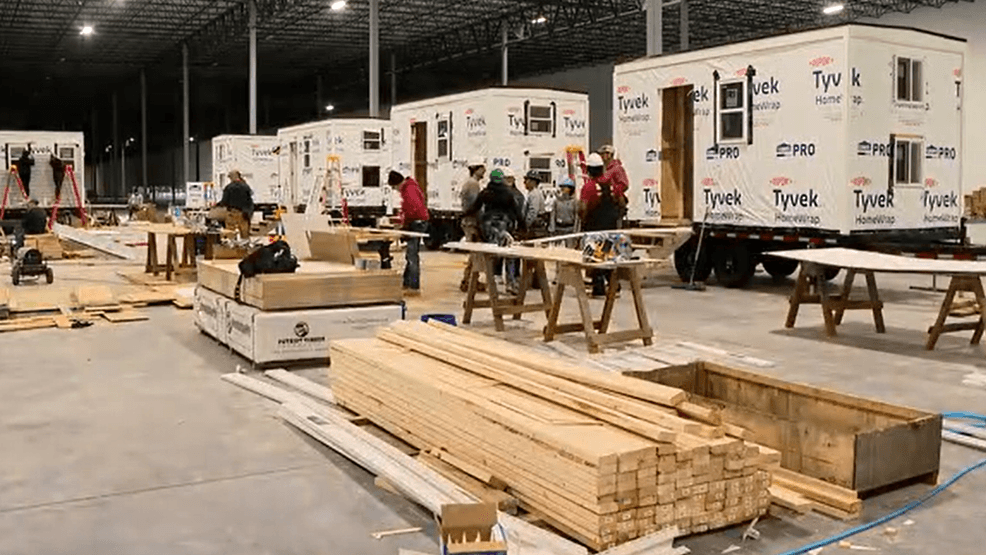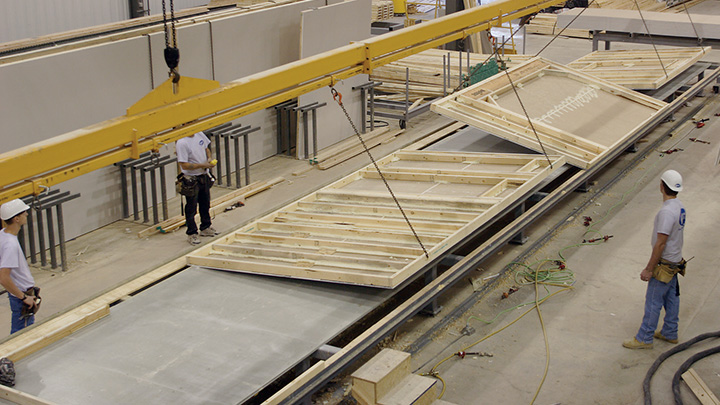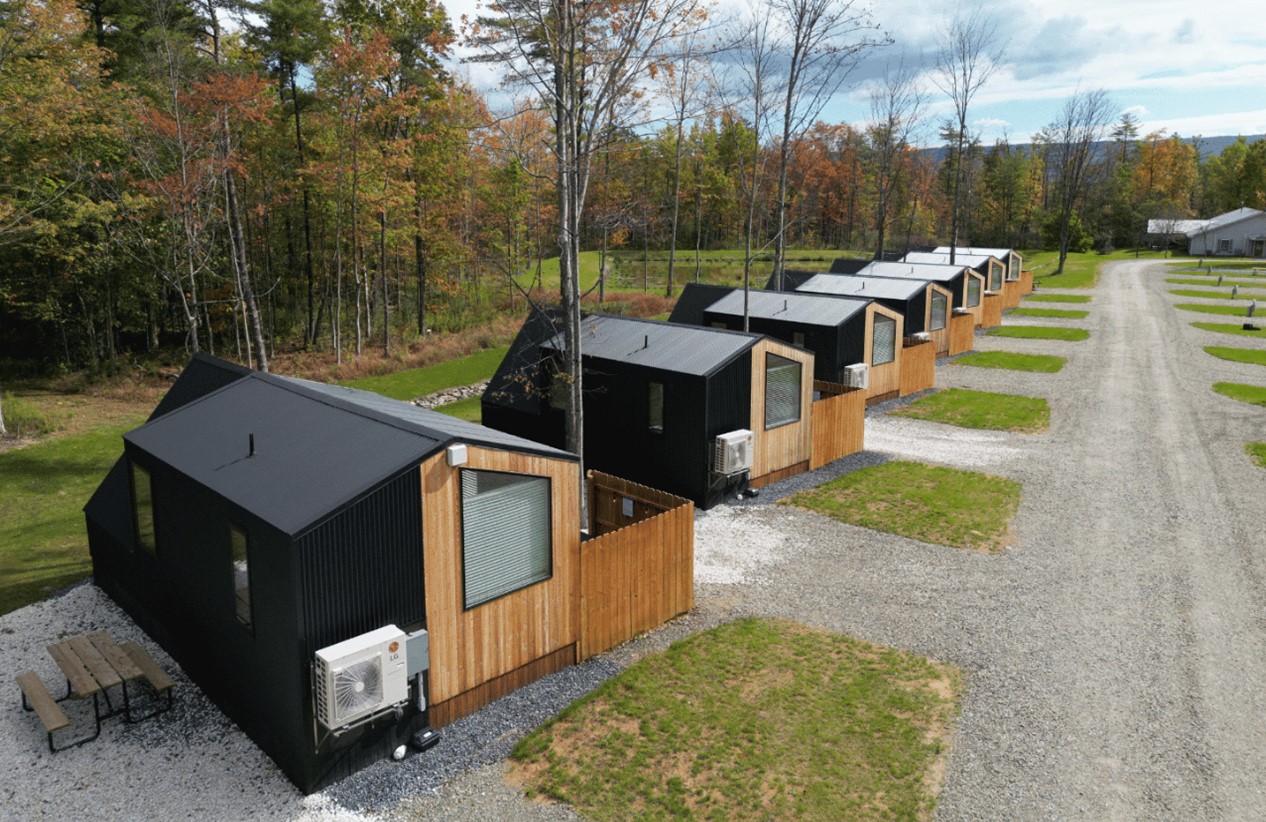As the holiday season embraces us with its spirit of giving and compassion, a heartwarming story is unfolding in North Carolina, where Lowe’s is teaming up with builders, volunteers, and implementing offsite construction to deliver hope in the form of tiny homes. These homes are not just any temporary shelters—they are a testament to the power of innovation, community collaboration, and the versatility of offsite modular building techniques.
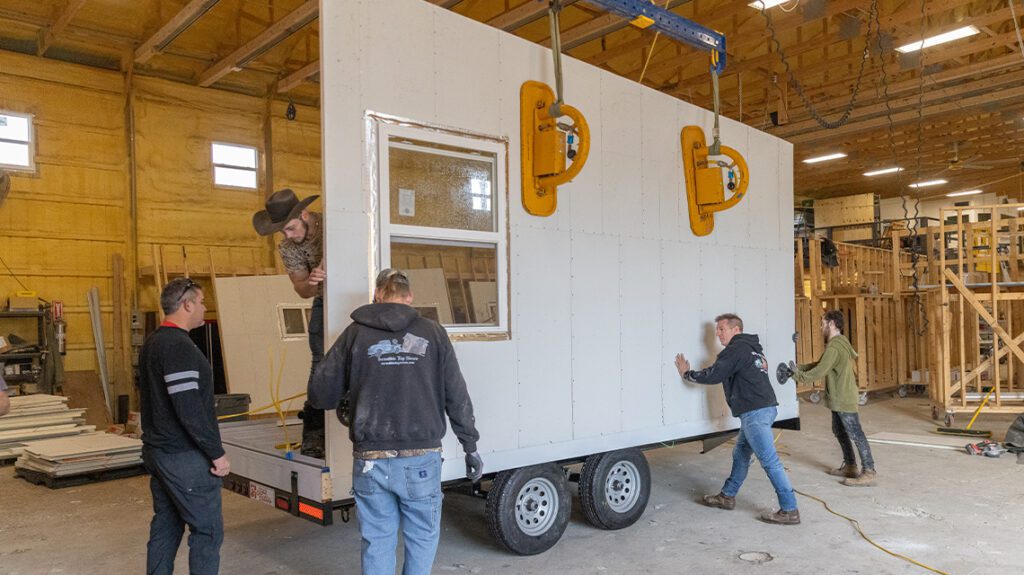
In the wake of Hurricane Helene’s devastating impact on western North Carolina, hundreds of families were left without homes. For many, the challenge was not just rebuilding but finding immediate, safe, and sustainable shelter. Enter Lowe’s, and their version of offsite modular, with an ambitious plan: construct and donate 100 tiny homes to provide relief just in time for Christmas.
Modular Construction: The Hero Behind the Scenes
What makes this initiative stand out is its use of modular construction methodology. Each tiny home, built offsite in a centralized warehouse in Charlotte, embodies the principles of efficiency and quality that modular construction offers. By pre-fabricating these homes in a controlled environment, the construction team could streamline the process, ensuring consistent quality while drastically reducing the build time. Let’s hear it for this “pop up” modular factory!

Each unit measures 8 feet by 16 feet and is designed to accommodate a family of four. Despite their compact size, these homes are fully equipped with essential amenities, including a kitchen, bathroom, sleeping quarters, and hookups for electricity. Lowe’s design team went a step further, furnishing and decorating the interiors to create a warm, inviting space that feels like home—a critical factor for families facing the upheaval of disaster.
The Speed of Modular Innovation
One of the most remarkable aspects of this project is the speed at which it was executed. Once Lowe’s Senior Director of Community Relations, Julie Yenichek, proposed the idea, she quickly brought in Charlotte-based builder Danny Kelly to develop a prototype. Thanks to the modular construction approach, the team could begin producing homes almost immediately, with volunteers and builders working in tandem to meet an ambitious timeline.
NASCAR haulers, another symbol of speed, played a pivotal role in transporting these homes to affected areas in Avery and Buncombe counties. This seamless coordination ensured that many families could move into their new homes before the holidays, providing them with a safe haven during the cold winter months.
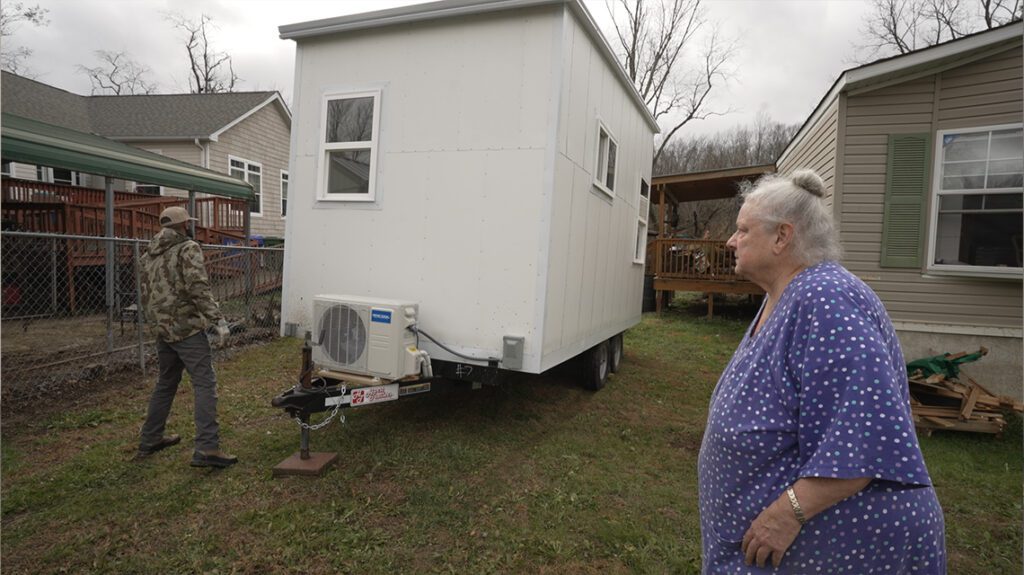
A Gift of Shelter and Hope
For families like Kathy Graham’s, these tiny homes are more than just a roof over their heads—they are a lifeline. Kathy, whose property was ravaged by the hurricane, shared her heartfelt gratitude: “Thank God. I got my new home, my tiny home. It’s awesome. It’s gorgeous. I can’t believe it. I can’t even say how much I appreciate it. The Lord has answered my prayers, honestly.”
Such stories underscore the profound impact that innovative building methods like modular construction can have, especially in times of crisis. The homes offer not only shelter but also a sense of normalcy and stability, allowing families to remain close to their communities while rebuilding their lives.
A Collaborative Effort
This project was made possible by an extraordinary collaboration between Lowe’s, local builders, and organizations like Habitat for Humanity and the Home Builders Association of Greater Charlotte. Volunteers from all walks of life joined hands, driven by the shared goal of bringing relief to those in need. Lowe’s contributed tools, materials, and a $12 million pledge toward hurricane relief efforts, underscoring its commitment to community resilience.
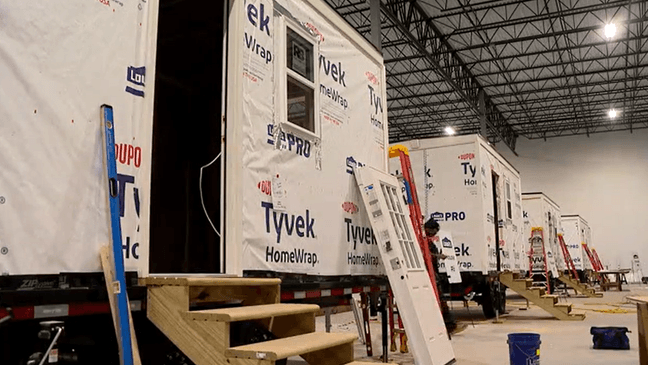
Lessons for the Industry
For the construction industry, this initiative serves as a powerful case study in the application of modular construction for disaster relief. The ability to pre-fabricate homes offsite and transport them quickly to affected areas demonstrates the efficiency and adaptability of this building method. It highlights how modular construction can go beyond its traditional use in residential and commercial projects to address urgent humanitarian needs.
Moreover, the project illustrates how innovation and compassion can work hand-in-hand to solve real-world problems. By thinking outside the box—or in this case, building inside a warehouse—Lowe’s and its partners have set a precedent for how modular construction can be leveraged in future disaster recovery efforts.
The Spirit of Giving
As we celebrate this season of generosity and goodwill, the story of these tiny modular homes reminds us of the transformative power of community and innovation. From the builders who poured their expertise into every detail to the volunteers who gave their time, this project embodies the true meaning of the holidays.
For families receiving these homes, Christmas brings not just shelter but a renewed sense of hope and belonging. And for the construction industry, it’s a moment to reflect on how our tools, methods, and creativity can make a lasting difference.
This Christmas, the tiny homes of North Carolina are a big reminder: when we combine the best of our skills with the best of our hearts, we can rebuild lives—one modular home at a time.
https://www.yahoo.com/news/lowe-giving-away-tiny-homes-162704180.html

